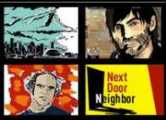I Wonder What the Other 60 Are Doing Right Now…
Sunday, October 22nd, 2006I don’t know who these people are, the designers and coders behind the How Many of Me? website, or what their mission is. Perhaps it’s to design a website that no one can hear about without going to, and maybe telling a friend about.
How Many of Me? uses data from the U.S. Census Bureau to tell you how many people in the country share a given name.
For example: “Smith” is — sacre bleu! — actually statistically the most popular surname in the United States. “Larry” is the 45th most popular first name. There are 9,038 individuals in the U.S. named Larry Smith.
“Sharpe” is the 888th most popular name in the country (tied with 74 other last names). “Katherine” is the 119th most popular first name. There are 61 people in the U.S. named Katherine Sharpe.
Last time I checked, though, I HAD THE BIGGEST INTERNET FOOTPRINT OF ANY OF THEM. That’s right, Katherine Sharpes. Where are you? Bring the noise. I mean, it’s not like you have better things to do than saturating the web with yourselves, um, right?
Hat tip: the ScienceBloggers








